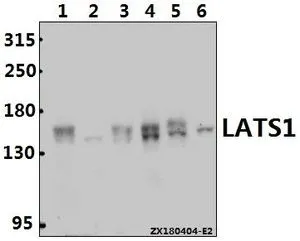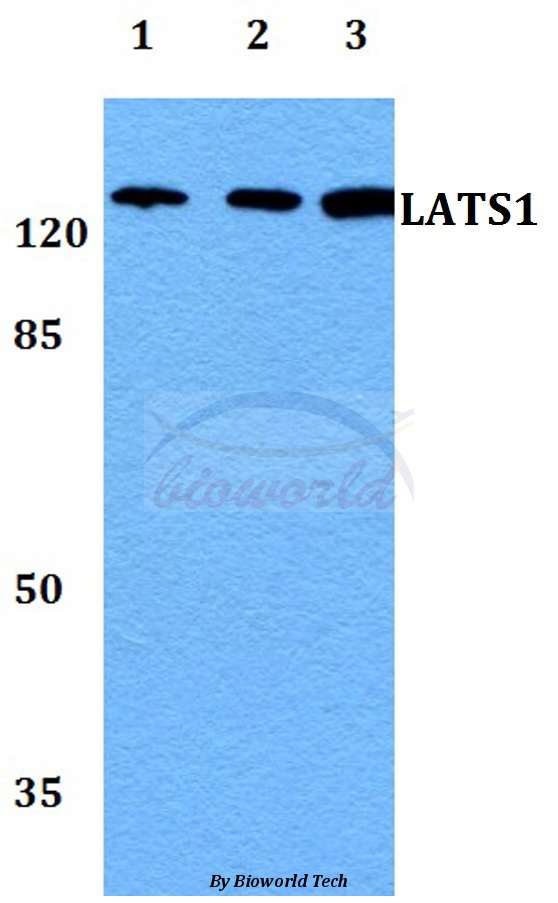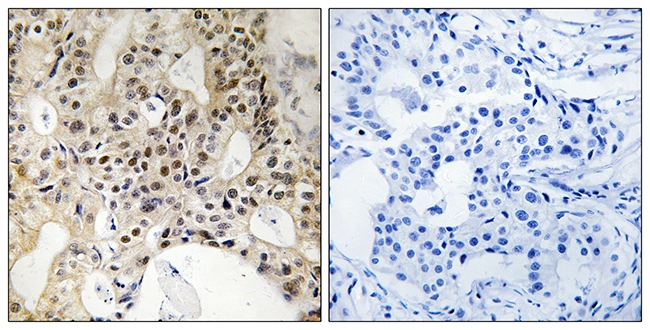
WB analysis of various samples using GTX66748 LATS1 antibody. Lane1 : L02 whole cell lysate(40ug) Lane2 : Hela whole cell lysate(40ug) Lane3 : SGC7901 whole cell lysate(40ug) Lane4 : HEK293T whole cell lysate(40ug) Lane5 : A2780 whole cell lysate(40ug) Lane6 : The Embryo tissue lysate of Mouse(40ug) Dilution : 1:500
LATS1 antibody
GTX66748
ApplicationsWestern Blot
Product group Antibodies
TargetLATS1
Overview
- SupplierGeneTex
- Product NameLATS1 antibody
- Delivery Days Customer9
- Application Supplier NoteWB: 1:500-1:1000. *Optimal dilutions/concentrations should be determined by the researcher.Not tested in other applications.
- ApplicationsWestern Blot
- CertificationResearch Use Only
- ClonalityPolyclonal
- Concentration1 mg/ml
- ConjugateUnconjugated
- Gene ID9113
- Target nameLATS1
- Target descriptionlarge tumor suppressor kinase 1
- Target synonymsWARTS, wts, serine/threonine-protein kinase LATS1, LATS (large tumor suppressor, Drosophila) homolog 1, LATS, large tumor suppressor, homolog 1, WARTS protein kinase, h-warts, large tumor suppressor homolog 1
- HostRabbit
- IsotypeIgG
- Protein IDO95835
- Protein NameSerine/threonine-protein kinase LATS1
- Scientific DescriptionThe protein encoded by this gene is a putative serine/threonine kinase that localizes to the mitotic apparatus and complexes with cell cycle controller CDC2 kinase in early mitosis. The protein is phosphorylated in a cell-cycle dependent manner, with late prophase phosphorylation remaining through metaphase. The N-terminal region of the protein binds CDC2 to form a complex showing reduced H1 histone kinase activity, indicating a role as a negative regulator of CDC2/cyclin A. In addition, the C-terminal kinase domain binds to its own N-terminal region, suggesting potential negative regulation through interference with complex formation via intramolecular binding. Biochemical and genetic data suggest a role as a tumor suppressor. This is supported by studies in knockout mice showing development of soft-tissue sarcomas, ovarian stromal cell tumors and a high sensitivity to carcinogenic treatments. [provided by RefSeq, Apr 2017]
- Storage Instruction-20°C or -80°C,2°C to 8°C
- UNSPSC12352203







